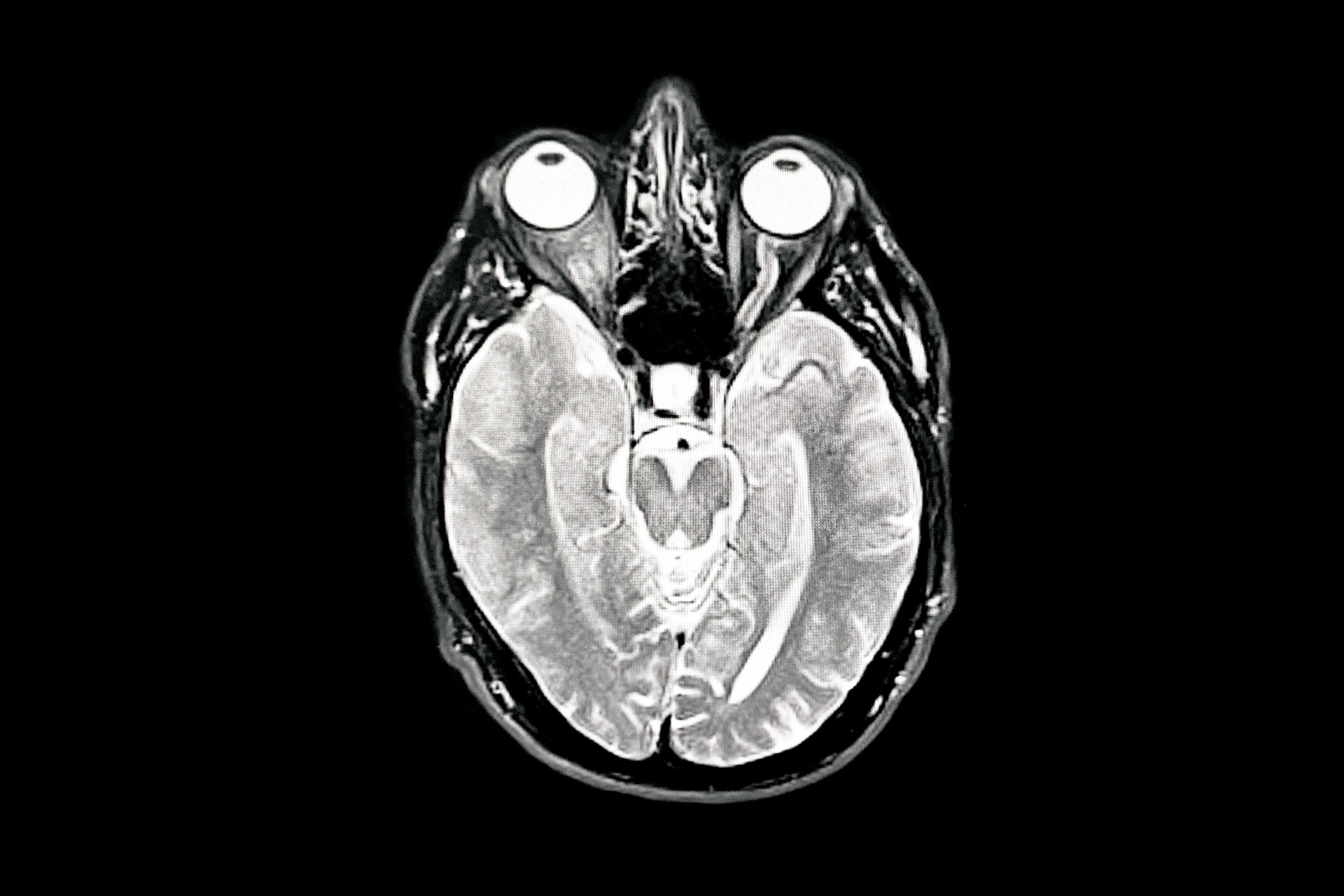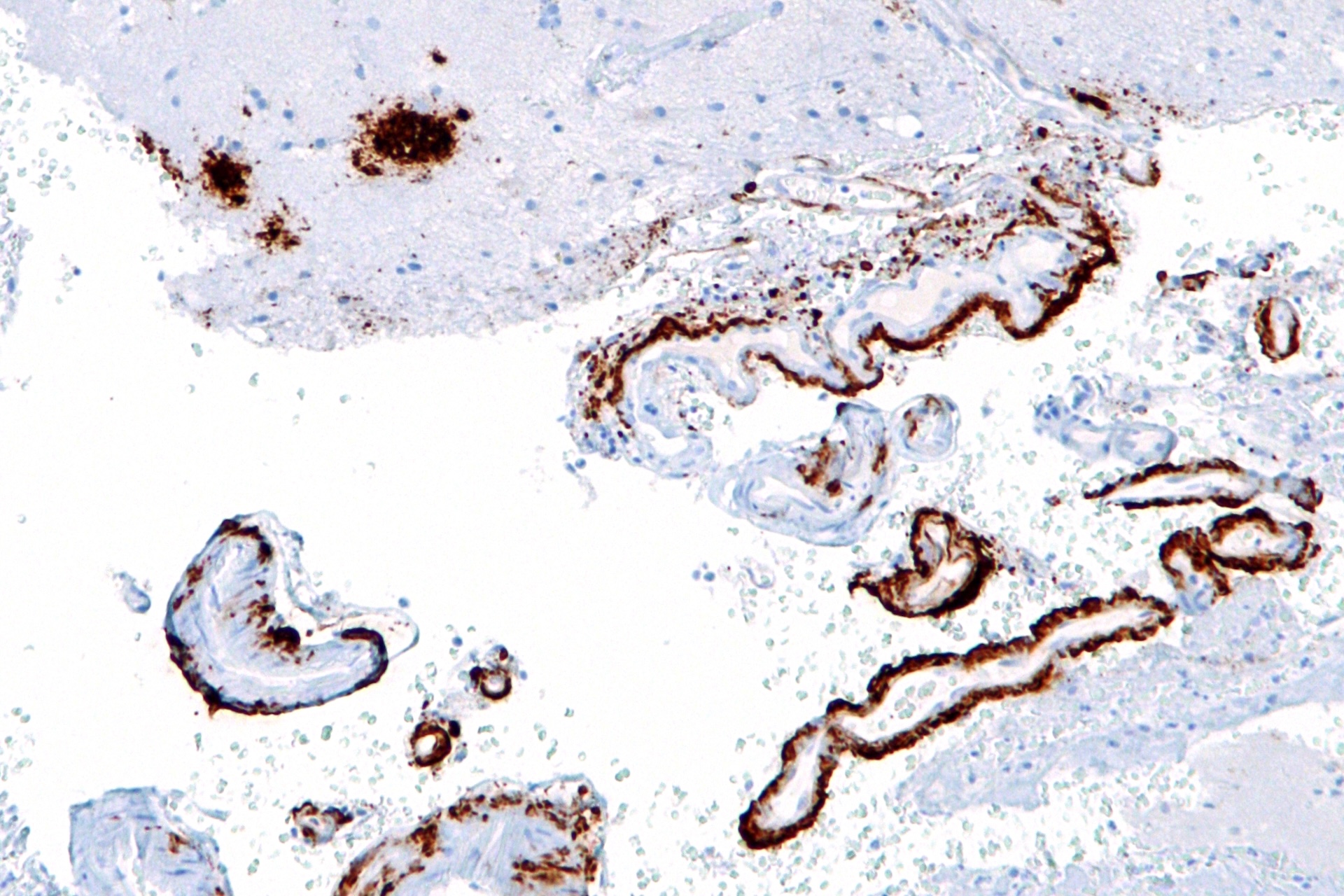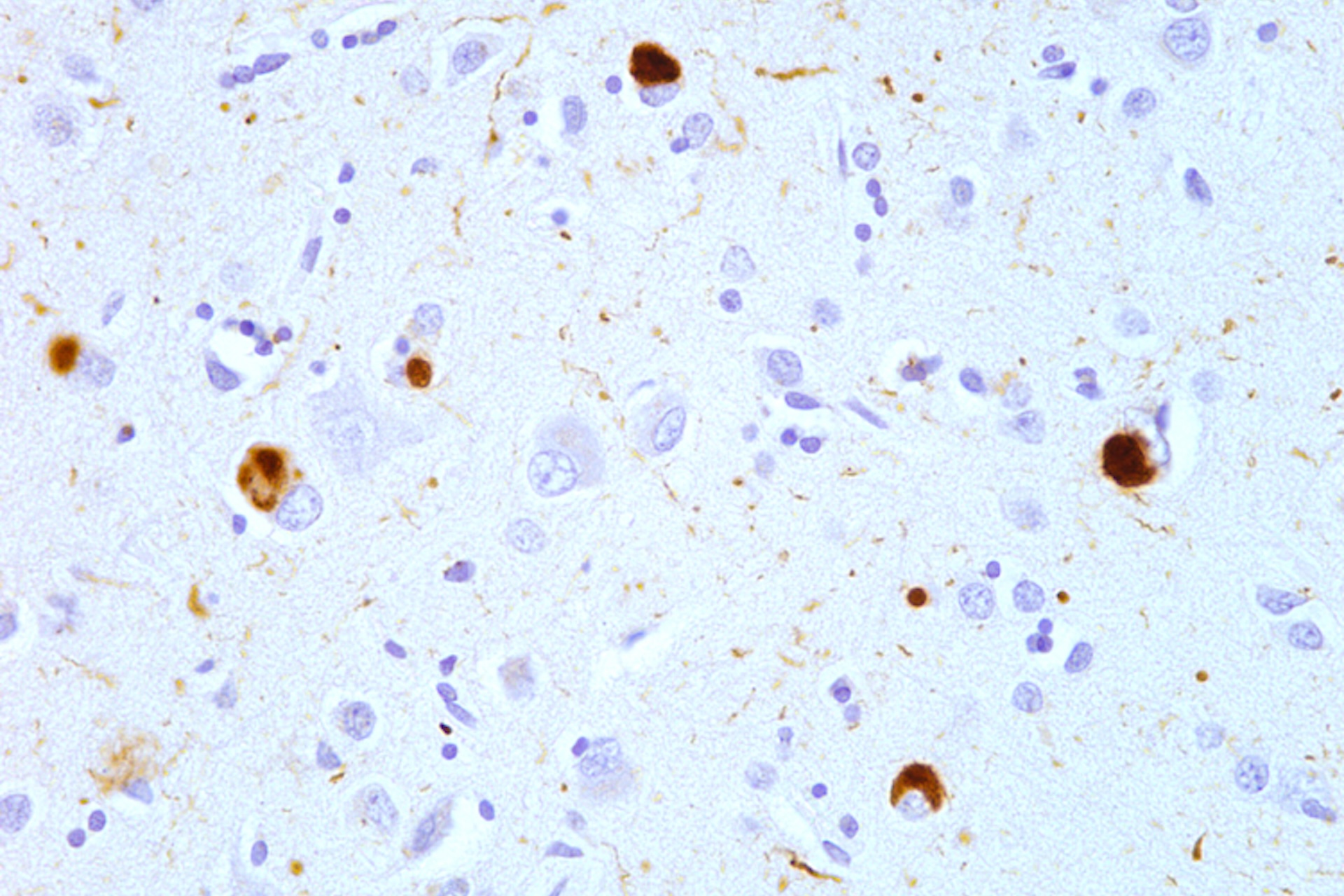Dementia: Facts about Alzheimer's and other forms of dementia
Learn about dementia, how it affects people, how it's diagnosed and what treatments are available.

Dementia is a group of diseases that involve having trouble with memory, thinking, reasoning and other brain functions. It is often associated with "neurodegeneration," meaning processes that destroy brain cells and get worse over time. Alzheimer's disease is the most common form of dementia, but there are other types.
Over 57 million people in the world currently have some form of dementia. People ages 65 and older are at higher risk for dementia than younger age groups, but the conditions can occur in younger people as well. As many as one-third of people 85 and older have some form of dementia, highlighting how the risk of the conditions rises with age, but not everyone develops them.
Dementia is diagnosed with a series of tests in combination with the patient's medical history. There are ways to manage the symptoms of dementia, but there is not yet a cure. Evidence suggests maintaining a healthy lifestyle may help to reduce the risk of developing dementia.
Everything you need to know about dementia
What are the most common types of dementia?
Dementia is a progressive disease, which means symptoms get worse over time. It can be categorized as "primary" — meaning the dementia itself is the main illness behind the symptoms — or as "secondary," if the person's dementia is because of a different disease.
Common types of primary dementia include Alzheimer's disease, vascular dementia, Lewy body dementia, frontotemporal dementia and mixed dementia.
Alzheimer's disease is the most common type of dementia, accounting for 60% to 80% of cases. In Alzheimer's, cells called neurons have trouble communicating. The neurons are damaged in part due to a buildup of two proteins in the brain: tau and beta-amyloid. In people with Alzheimer's, one of the first abilities affected is memory. Over time, people with Alzheimer's have difficulties with everyday tasks, like cooking meals, driving and paying bills.
Vascular dementia is the second most common type. It occurs when there is an interruption of blood and oxygen to the brain, such as during a stroke. The abnormalities from vascular dementia can usually be seen with an MRI scan. The first symptoms tend to include difficulties with problem-solving, slowed thinking, loss of focus and organization.
Lewy body dementia is caused by abnormal deposits of a protein called alpha-synuclein, which forms clumps called Lewy bodies. The protein affects the chemicals that act as messengers in the brain. Symptoms of Lewy body dementia may include problems with thinking, movement, sleep and balance, as well as mood changes and constipation. (Parkinson's disease dementia is a form of Lewy body dementia.)
Frontotemporal dementia results from damage to the frontal and temporal lobes of the brain, located behind the forehead and near the ears, respectively. This rare type of dementia can occur in younger people — 60% of those diagnosed are 45 to 64 years old. Symptoms often involve changes in behavior, movement, language and emotion.
Mixed dementia is when a person has more than one type of dementia at once. This type is often uncovered after a person has died; typically, during life, they'll have been diagnosed with just one type of dementia and the second was unrecognized. People over 80 are more likely to have mixed dementia and experience a faster decline than those with only one type.
Is dementia related to other diseases or conditions?
Dementia may be linked with other diseases. When it occurs as a result of another condition, it is considered "secondary dementia." Some conditions that can cause dementia include Huntington's disease, Creutzfeldt-Jakob disease, Parkinson's disease, Wernicke-Korsakoff syndrome, HIV/AIDS and traumatic brain injuries.
Dementia-like symptoms may also result from prolonged and heavy alcohol use, medication side effects, mental health conditions, low levels of key nutrients, infections, metabolic conditions or brain tumors. When the root cause is treated, these types of dementia symptoms can sometimes be reversed.
What causes dementia, and how does it affect the brain?
Generally, dementia occurs because the brain is not functioning properly. In some cases, extra and abnormal proteins are deposited in the brain, as in the case of Alzheimer's and Lewy body dementia. The proteins make it harder for the neurons to communicate with each other.
Other causes of dementia happen when the connections between nerve cells break down, as in frontotemporal dementia. In this case, the brain signals are not sent and received properly. Damage to blood vessels in the brain can also cause dementia, known as vascular dementia.
Is dementia genetic?
Genetics can play a role in whether someone develops dementia. In Alzheimer's, there are at least 80 stretches of DNA associated with the disease. One gene, APOE, has a larger impact on the risk of Alzheimer's dementia that sets in after age 65.
The gene helps to carry cholesterol, a fatty substance, in the bloodstream. There are three versions of the APOE gene that influence the likelihood that someone will develop Alzheimer's. One type, called e4, increases the risk, while another version, e2, decreases the risk.
Genetics also may play a role in the development of frontotemporal dementia. An estimated one-third of these cases involve inherited gene mutations, or changes, passed from parent to child.
What are the first signs of dementia?
Dementia symptoms usually start subtle and get worse over time. Different types of dementia can have different symptoms, but there are 10 early signs of dementia commonly seen in many types, according to the Alzheimer's Association:
- Memory loss that disrupts daily life: forgetting new information and dates, or asking the same questions
- Challenges in planning or solving problems: trouble keeping track of bills, following recipes, or concentrating
- Difficulty completing familiar tasks: struggling with regular tasks, like remembering locations, grocery lists, or rules of a game
- Confusion with time or place: mixing up dates and locations
- Trouble understanding visual images and spatial relationships: changing vision, possibly leading to balance problems or poorly judging distances
- New problems with words in speaking or writing: difficulty following or joining a conversation
- Misplacing things and losing the ability to retrace steps: putting items in odd locations
- Decreased or poor judgment: struggling to make decisions or judging circumstances such as personal cleanliness
- Withdrawal from work or social activities: withdrawing from hobbies and activities
- Changes in mood and personality: becoming confused, suspicious, depressed, fearful or anxious
What are the stages of dementia?
Broadly, dementia is categorized as mild, moderate or severe — also called early, middle and late stages. For patients and caregivers, dementia is more specifically categorized into seven stages using the Global Deterioration Scale (GDS).
Stages 1 to 3 range from no symptoms to symptoms of mild cognitive decline. These symptoms may go unnoticed by the person experiencing dementia. In Stages 4 and 5, the individual has moderate symptoms, including memory loss and needing assistance with tasks. By Stage 7, the person has severe symptoms, has lost their verbal abilities, and is completely dependent on caregivers.
Other dementia scales include the Functional Assessment Staging Tool (FAST), the Clinical Dementia Rating (CDR) Scale, and the Mini-Mental State Examination (MMSE), and are used similarly to track disease progression.
How do people die of dementia?
Dementia is among the leading causes of death worldwide. How long someone will live after a dementia diagnosis varies, as each case is unique. Some people can live as long as 20 years, while others decline much more quickly.
As dementia worsens, there are several potential complications that can be deadly. For example, the affected person may struggle to eat due to problems with chewing and swallowing or being distracted by their environment disrupting eating.This could lead to hydration and nutrition problems, as well as leave them more likely to get other illnesses, such as aspiration pneumonia, which is when foods or liquids enter the lungs.
People can also grow prone to urinary tract infections due to trouble maintaining personal hygiene, staying hydrated and controlling their bladder, and these infections can grow severe enough to be deadly. Dangerous falls are also common among people with advanced dementia.
In addition, people with dementia may forget to take medications or fail to receive care for other conditions they have, such as high blood pressure. This can raise the risk of serious complications from those diseases. For instance, people with dementia can experience heart attacks, complications from diabetes, kidney failure, bedsores or sepsis, a life-threatening immune response to an infection.
What are the treatments for dementia?
While some dementia-like symptoms can potentially be reversed, there is no cure for progressive dementia. However, there are treatments that can help reduce symptoms and slow the person's decline.
Two treatments for Alzheimer's — donanemab and lecanemab — target the proteins that have built up in the brain. A number of other medicines are available to ease symptoms by helping to transmit brain signals in Alzheimer's and other types of dementia; for example, cholinesterase inhibitors increase a chemical messenger in the brain to help with memory.
To help with everyday activities and anxieties, treatments such as occupational therapy, speech therapy and counseling are useful. In early dementia, patients may develop anxieties around the progression of the disease, while in late dementia, confusion and disorientation can trigger anxiety, and various therapies can help.
As a caregiver, there are a number of ways to help people with dementia, such as establishing routines, modifying the environment to keep them safe, and engaging the person in their environment. The Centers for Disease Control and Prevention offers guidance for creating a care plan.
Dementia glossary
- Neurodegeneration — a gradual decline in the function of neurons and eventually loss, or death, of neurons.
- Neuron — a cell that sends and receives signals in the body and within the brain. Neurons use electrical and chemical signaling, which rely on proteins and neurotransmitters to help send the messages.
- Primary dementia — a progressive form of dementia in which symptoms get worse over time and the dementia itself is the core condition, rather than the dementia arising from a different underlying disease.
- Secondary dementia — a form of dementia associated with another disease, and therefore dementia is not the main ailment.
Dementia pictures

Brain shrinkage
Diseases such as Alzheimer's can cause the brain to shrink, or "atrophy," which is visible on MRI scans like the one above.

Amyloid plaques
Alzheimer's is linked to the build-up of abnormal clumps of protein, called amyloid plaques, in the brain, seen in this microscope image in brown.

Lewy bodies
Lewy body dementia is associated with abnormal deposits of proteins that form clumps called "Lewy bodies," shown in brown in this image.
Discover more
- There's a new blood test for Alzheimer's. Here's everything you need to know about it.
- 'Look at all this we don't understand': Study unravels whole new layer of Alzheimer's disease
- Man nearly guaranteed to get early Alzheimer's is still disease-free in his 70s — how?
Get the world’s most fascinating discoveries delivered straight to your inbox.

Shira Gordon is a freelance health and science writer. She has a PhD from the University of Cincinnati in biology. She spent almost a decade in the lab after her doctorate degree. Her research focused on animal communication, blending neurophysiology, behavior, and biomechanics. Now as a science communicator, she covers human health, animals, and ecology. In addition to writing articles, Gordon has worked on website content for numerous NIH and HHS institutes and has produced and written scripts for award-winning videos.
You must confirm your public display name before commenting
Please logout and then login again, you will then be prompted to enter your display name.




